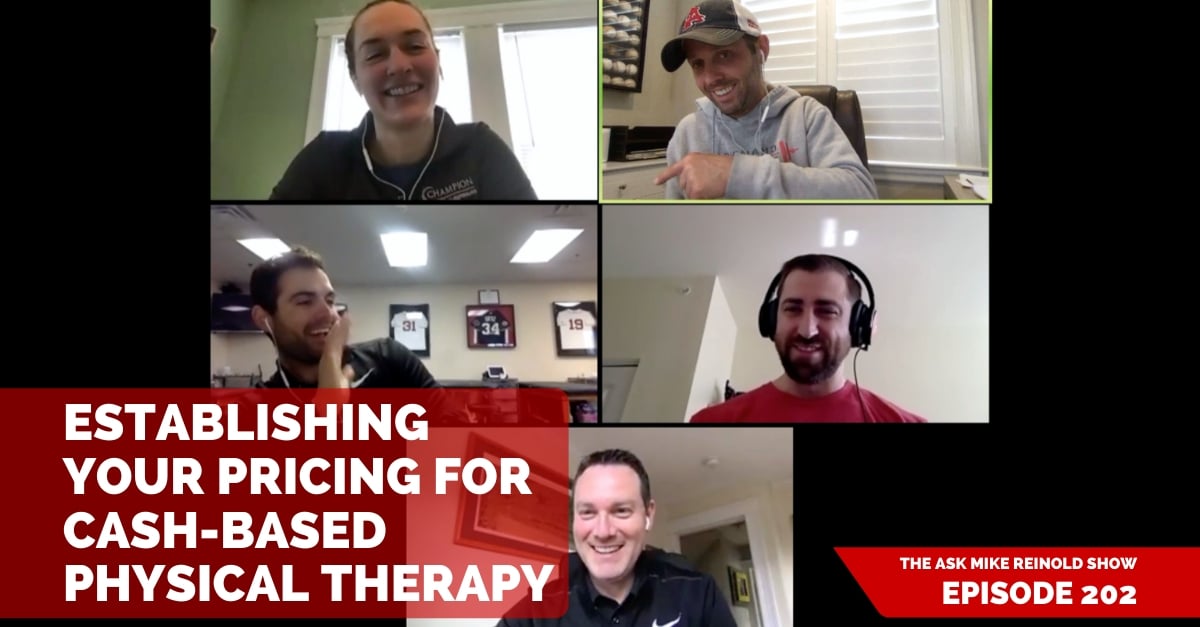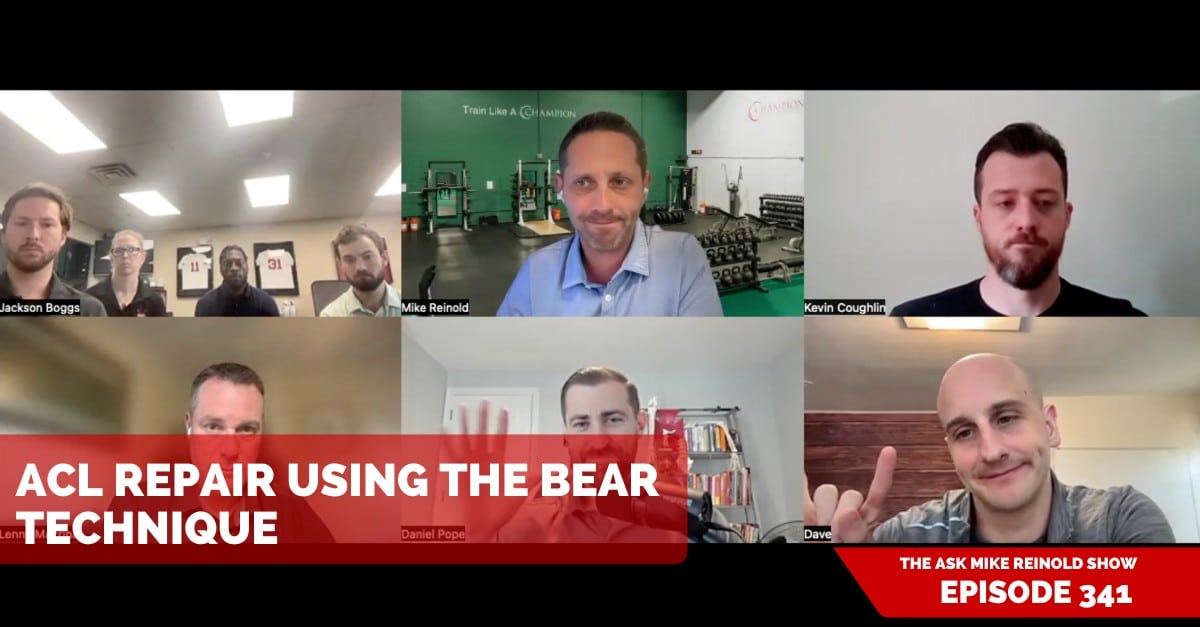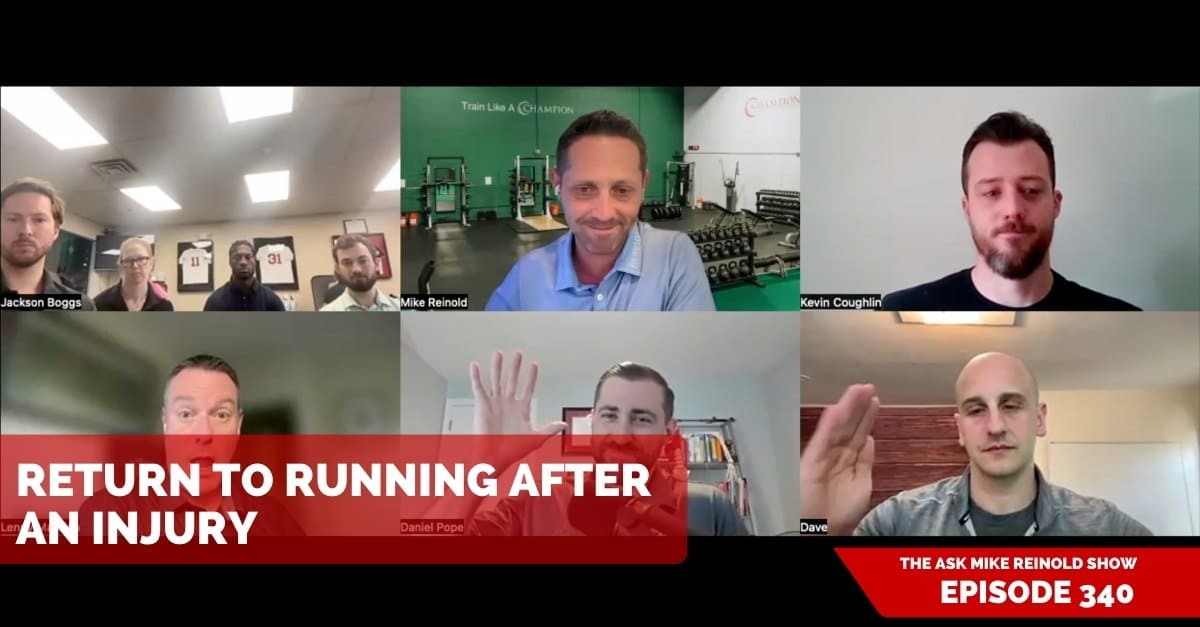On this episode of the #AskMikeReinold show, we talk about some of the factors to consider when determining your fees and pricing for cash-based physical therapy. To view more episodes, subscribe, and ask your questions, go to mikereinold.com/askmikereinold.
#AskMikeReinold Episode 202: Establishing Your Pricing for Cash-Based Physical Therapy
Listen and Subscribe to Podcast
You can use the player below to listen to the podcast or subscribe. If you are enjoying the podcast, PLEASE click here to leave us a review in iTunes, it will really mean a lot to us. THANKS!
Show Notes
Transcript
Mike Reinold: On this episode of the Ask Mike Reinold show, we talk about some of the things you should consider when determining your pricing for a cash-based physical therapy practice.
Mike Reinold: Courtney is a physical therapist of over 10 years with a high clientele of athletes: “I recently partnered with a strength and conditioning coach to provide treatment and training under the same roof.” Awesome. That’s pretty cool. “I’ve struggled with insurance contracts and reimbursement rates. Therefore becoming cash-based will be my goal in the next month. What influenced your decision on your pricing and packages to charge your clientele?”
Mike Reinold: I like that. That’s pretty good. You know the funny thing Courtney too, if I remember Lenny, you might remember this, we both worked in Alabama. Your reimbursement rates in Alabama are pretty good, right?
Lenny Macrina: Yeah, they’re really good.
Mike Reinold: Like really good! How much you planning on charging? So that might be part of our discussion in there though. Do you remember off the top of your head, Len, with the average reimbursement rates in Alabama were?
Lenny Macrina: Back then I think it was probably like $130-ish dollars session.
Mike Reinold: Really? No way.
Lenny Macrina: Yeah. Rates in Massachusetts-
Lisa Russell: For like half an hour?
Mike Reinold: No, for four units.
Lenny Macrina: Yeah, four to six units, actually. Probably more than that according to the billing.
Mike Reinold: So that’s interesting though. So some of the insurance contracts would take six units? Is that a thing?
Lenny Macrina: Oh yeah.
Lisa Russell: Not anymore.
Mike Reinold: Yeah, probably less nowadays. So if I remember right, in terms of the numbers from people I’ve talked to, I’ve heard $95 to $105 in Alabama. Now we could be wrong so take all this with a grain of salt?
Mike Reinold: But I think the first lesson to talk about right now and with this thing is, is figuring out what your insurance contracts are. So there’s a ton of insurance companies, right? You don’t need to accept them all.
Mike Reinold: You can be in network with some and out of network with others too. So that’s an interesting thing. So figure out what that real reimbursement rate is. For us in Massachusetts, I don’t even remember now Len, I think it was what? Maybe 70 bucks, maybe 75 tops.
Lenny Macrina: I think at the most it was like $70, $75.
Mike Reinold: And we have friends like New York, they’re in like the $50s maybe. Sure, there’s ways, there’s loopholes and ways to try and get around this. But none of us want to go through that process. So I think the way to answer your first question about what made us go cash-based was we’ve talked about this a lot on the podcast.
Mike Reinold: We went cash-based because this is how we want to treat. We don’t want to have to justify what we’re doing to an insurance company. We want to be able to provide the services we want holistically and total body. And we want to be able to pivot to… Oh, they’re having back back pain today? Let’s pivot a little bit, right? We didn’t want to have those restrictions.
Mike Reinold: I wouldn’t say finances was the number one thing. And I’ll be honest with you, let’s say you’re making 75 bucks a visit, which I actually think is probably not an unusual price nowadays, although I could be wrong. So if I’m wrong, ignore this, right? But if you just put two people an hour, which is low, two people an hour and you’re getting reimbursed 75 bucks, that’s 150 bucks an hour. That’s a good amount of money, right?
Mike Reinold: You got to start thinking how much do you want to charge per hour because that’s a lot. Now most clinics see three or four people an hour. So if you’re getting reimbursed even less than 75, but again, 75 bucks, whoa. That’s 300 bucks an hour you’re getting reimbursed if you put four people in there.
Mike Reinold: So I’m not saying you should treat that way. That’s why we are cash-based. We don’t want to treat that way. But finances wasn’t the biggest thing. So I think that was one thing. Anybody want to elaborate on that concept or any thoughts?
Lenny Macrina: I would say I can see her point because to get that $75 an hour or whatever it is, you have to submit and you’ve got to wait 20, 30, 40 days and then they don’t tell you that something went wrong and you didn’t dot your i or cross your t and then 90 days later you’re like, “Huh, we never got reimbursed for Sally’s 30 sessions of PT that she did back last year. Wonder what’s going on with that?”
Lenny Macrina: And then you have to con… I understand what she’s going through. But I would say noble idea, I like it. You probably have your 10 years in so you have a… This is somebody that I think could definitely do it because you have your people, your base of clients that you’ve treated for a long time now and they’ll probably come to you because they’re dedicated to you and not the facility, usually.
Lenny Macrina: Alabama’s direct access laws are different than Massachusetts’, so I think you have to keep that in mind too that you’re still going to have to deal with doctors and get prescriptions signed and all that stuff. So in Massachusetts we have full direct access. We don’t need to deal with doctors really at all. And that’s not to say we don’t, but we don’t have to.
Lenny Macrina: In Alabama, from what I remember when I lived there was you can see somebody if they’ve had an injury that they’ve seen a doctor recently, within the past 30 days, you could see them for so many visits, blah blah blah. So direct access is very different in Alabama. I imagine you know all this already and that’s part of your business model, your business plan. But I think if somebody could do it, it’s you with the 10 year plus experience and has that clientele that that loves you.
Lenny Macrina: Maybe like Mike said at Alabama… Blue Cross Blue Shield of Alabama is, I think it’s a monopoly. I think it’s 90% or 95% of the people have that. So you get that, or you don’t get that and you’re out of network with Blue Cross Blue Shield of Alabama and now you’re submitting bills out of network and you see how that works for you.
Lenny Macrina: But maybe you are, I don’t even know… Are you going to have to cancel all your contracts now with United Healthcare and Cigna and Aetna and Blue Cross, which can be a pain to get out of. There’s a lot of headaches that go into it.
Lenny Macrina: As for pricing, I think your question about pricing, you got to see what the market is in your area, what reimbursement is, where do you live in Alabama? Is it more of an affluent area like Vestavia, Mountain Brook, people that are looking for this or is it elsewhere where people are still relying on their insurance which of course is very important, but obviously you need to take all that into consideration is what your market is and what other people are charging for cash-based if there is even a market there.
Lenny Macrina: And if not, now you’re setting the market. So you can try to figure it out, but the higher you go in price, the different clients you’re going to get. So be cautious how high you go. And if you go too low, you’re going to be seeing… I don’t know, it could be interesting for you. So I would just, I would be cautious with how you transition in this cash-based thing, if you ended up doing it.
Mike Reinold: So I think the big important thing I got from Len there, was you got to you got to take a survey of your market already. You have to figure out what people can afford in your area. I think that’s a big one. It’s going to vary. But remember your expenses are going to vary too, so you don’t have to charge as much as other people are charging if you’re in a low expense area with people with less income. So it can really vary with that. So I like that.
Mike Reinold: And then the other big thing I liked from Len was, look around what are people getting for one-on-one personal training? What are people getting from massages, from a good massage company that does it. Those types of things.
Mike Reinold: Look around at those other services. What are golf lessons going for, what are… Those sorts of things? That’s some things you can do for pricing. Maybe Dan might be a good one and Mike, although Mike’s got a little different clientele with golf, but Lenny mentioned this a little bit. Is there a such thing as being too expensive? And what’s the negatives of being too expensive? Dan?
Dan Pope: Yeah, I guess a couple of things. I mean that makes total sense. So at least for me, if I’m seeing a bunch of 20 something fitness people that generally don’t have a ton of money, so if we set the price too high, I’m missing my entire population. I’m trying to reach as a cash-based PT. So I think that’s really important to keep in mind.
Dan Pope: Maybe you could have a lower price option and maybe have shorter sessions or something along those lines. At least for me, and again I never had to make this transition like Mike and Lenny have, but I think the first thing I would try to figure out what are my expenses? How much does it cost to keep this place open? What was I making before? How many people do I want to see per week and what does that number look like?
Dan Pope: And then you have a little bit of a baseline and then you can use all those other variables that everyone else has talked about here to start to formulate what you want to start charging people. The other piece is that once you get rolling, is it working? Is it not working? You can always make that change. All right, we need to go up a little bit. We thought we were going to see some more people. Or we’re seeing so many people or whatever you need to do it just to make it work. I think you can start to change as you start to progress along.
Mike Reinold: Yeah. I like that. I think a good important concept with that too, Dan, is that if you identify your client target in your ideal person, then you got to figure out what they can afford now. So it’s what is your geographical area afford? But then what is your ideal client afford? I agree with people in their early twenties that just want to get back to working out in the gym probably have a little bit less disposable income than somebody else.
Mike Reinold: You said you worked with athletes, maybe you work with a lot of high school athletes and their parents will pay anything to get them back on the field, especially in Alabama, especially if they’re football players. Maybe you can charge a little bit higher for that. That’s a good way of establishing your prices. But yeah. Mike, what do you got?
Mike Scaduto: I think just one conceptual thing to think about is I tend to look at myself and I know the other PTs at Champion do as well, we look at ourselves as consultants, so less solely focused on a one-on-one sessions in person, but that patient has total access to us outside of the clinic as well. And that’s part of the value that we bring. I don’t want to say it’s included in the price, but it kind of is. Our time outside of treating you one-on-one. If you want to reach out via text message, via email, we provide those services to you and we’re not necessarily charging you for that exact time.
Mike Scaduto: So I think that’s a big part of what we offer is consulting outside of one-on-one sessions. And then I think the other thing is you have to be able to work with the patient and determine the plan of care that works best for the patient. It’s not necessarily going to be three times a week for every patient that comes in.
Mike Scaduto: I know we see a lot of people… I see maybe someone once every two weeks. We go over the plan, we review it, we check in two weeks later, we make sure everything’s going well. So that’s one way to work around maybe any financial concerns that the patient has. Make things more affordable for them, still offer your services and still provide value to the patient.
Mike Reinold: I like it. I like it. The only other thing that popped up into my head during all of this too is the other thing is try to get a feel for what copays are in your area, maybe. Because if people have really, really high copays, like a $50 copay or something like that, then them paying not that much more to get to see you one-on-one is kind of a cool deal too. So something to keep in mind. So I like it.
Mike Reinold: I think check out your geography, check out the local service providers around you, what they’re doing, including sport lessons and stuff like that. Try to find all those things and then establish your prices. But great ideas from Dan and Mike, if you kind of put those two together, is that maybe you’re charging just to make it easy for math, maybe you’re charging 100 bucks an hour, but maybe you have a 30 minute session for somebody. So that way you can get that price point down. Or maybe you have different frequencies where maybe you’re like, “Hey, I know you need to see me but I know you don’t have a ton of disposable income. Let’s check in once a week or once every other week and do our best.”
Mike Reinold: So you can play with frequency, you can play with the duration there a little bit if that’s that right person for you. So lots of ideas there, I think. I don’t know if we can answer that question for you, but hopefully I think we covered a lot of good aspects with that.
Mike Reinold: I think we covered it well enough that you should be able to figure out a price that will be effective for you. So, awesome. Great question. Thanks so much for submitting that.
Mike Reinold: If you have a question like that, head to MikeReinold.com, click on that podcast link and you can ask us anything you want. We’ll keep answering away as long as you keep asking away. Maybe that’s going to be like a new catchphrase. Is that pretty good? Anyway, I appreciate it. We will see you guys on the next episode.





